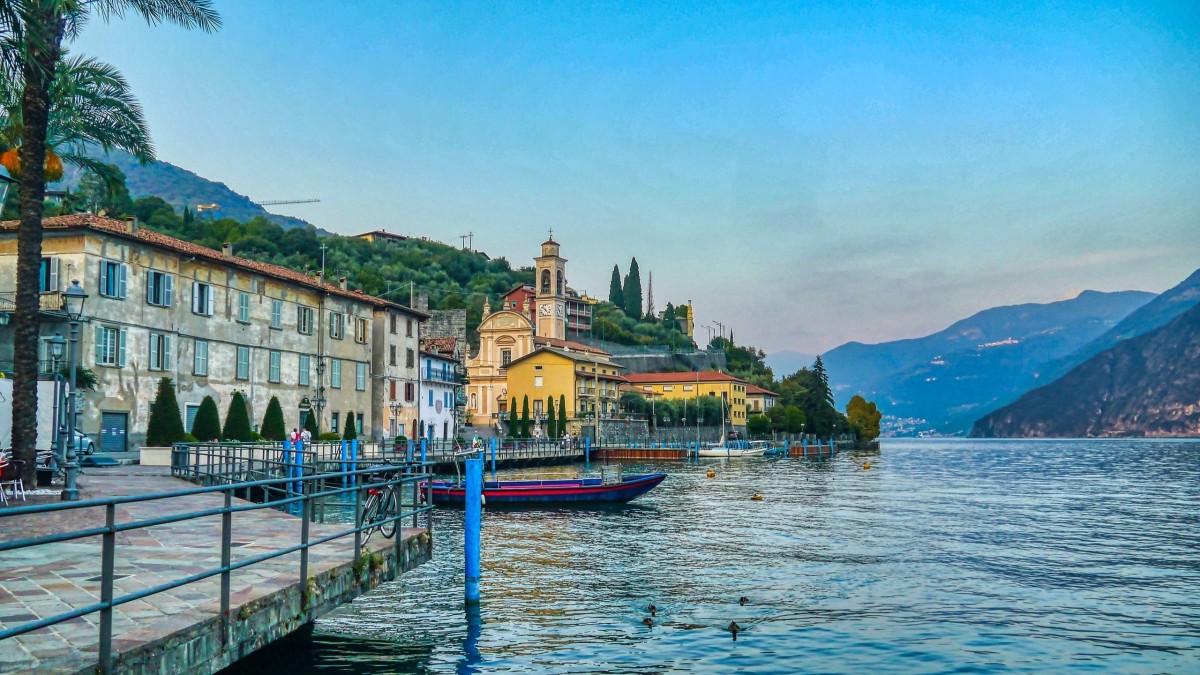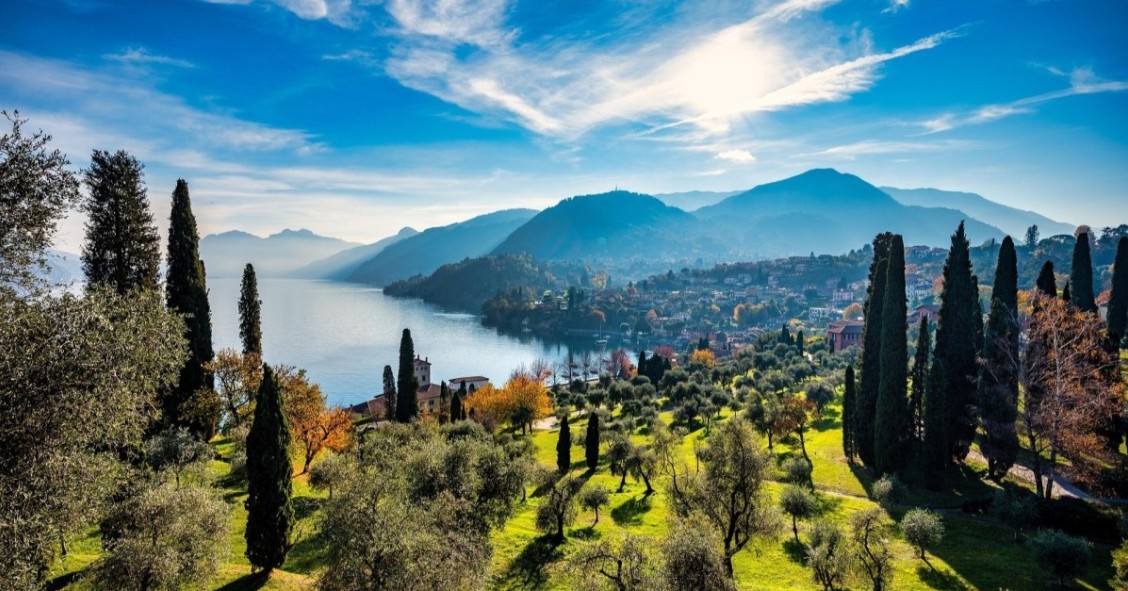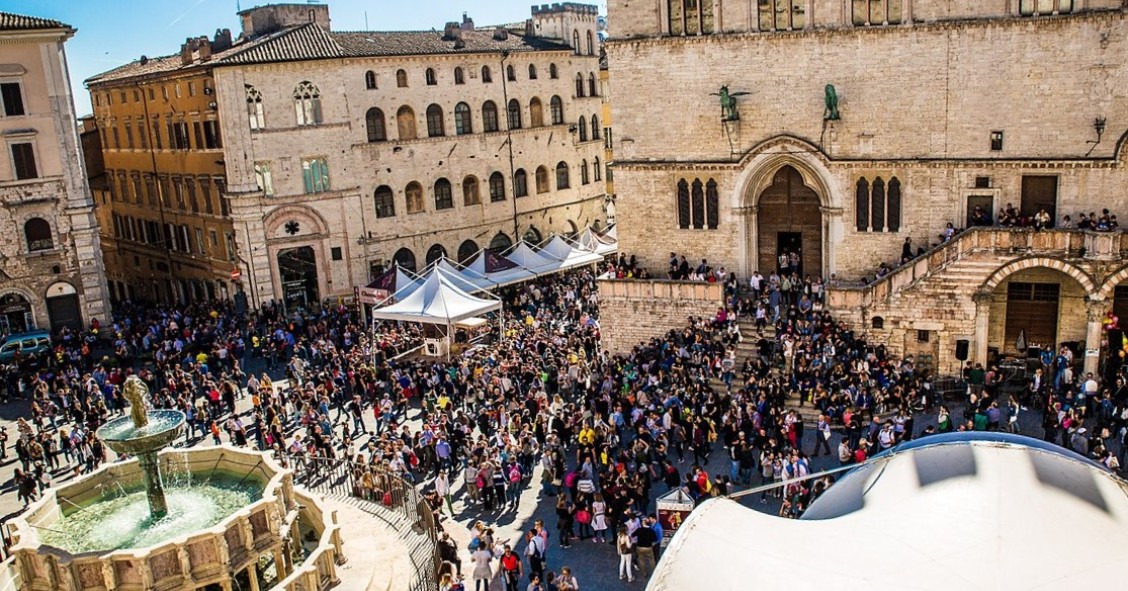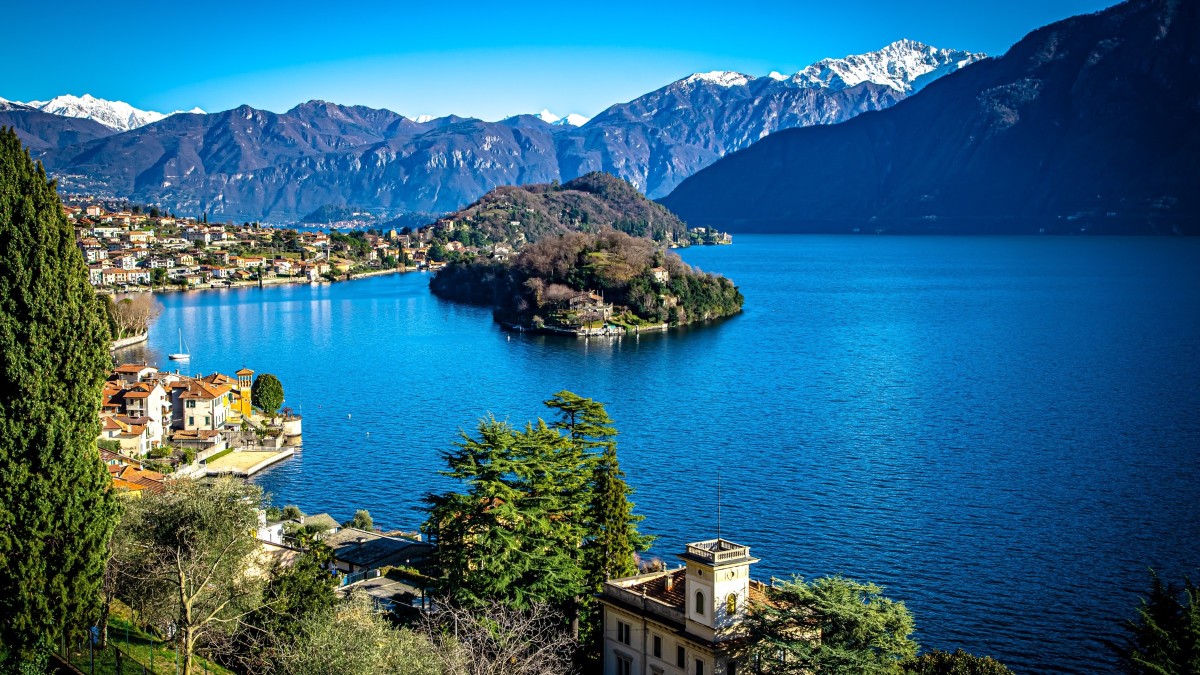
Italy is a country with a varied landscape: it offers sea, mountains, rivers, lakes. From north to south, there are more than 1,500 lakes of natural or artificial origin, some of them bathing lakes, making them popular destinations for tourism. At this point you might then ask yourself which are the largest lakes in Italy and what is their respective size. Here is a list of the most important Italian basins and where they are located.
Lake Garda
Lake Garda is the largest lake in Italy, as it has an area of 370 km2 and an average depth of 133 metres. It is a real jewel set between the regions of Lombardy, Veneto and Trentino-Alto Adige. Its crystal-clear blue waters, surrounded by villages and mountains, offer a breathtaking panorama that remains etched in the memory.
The origins of Lake Garda date back to the last ice age, but today the lake is a popular tourist destination thanks to its natural beauty, mild climate, the opportunity to swim or play sports, and the many things to see.
Finally, the shores of Lake Garda are dotted with picturesque villages and charming hamlets of history and culture. These include Sirmione, famous for its thermal baths and Scaliger castle, and Desenzano del Garda, with its lively lakefront and the remains of a Roman villa.
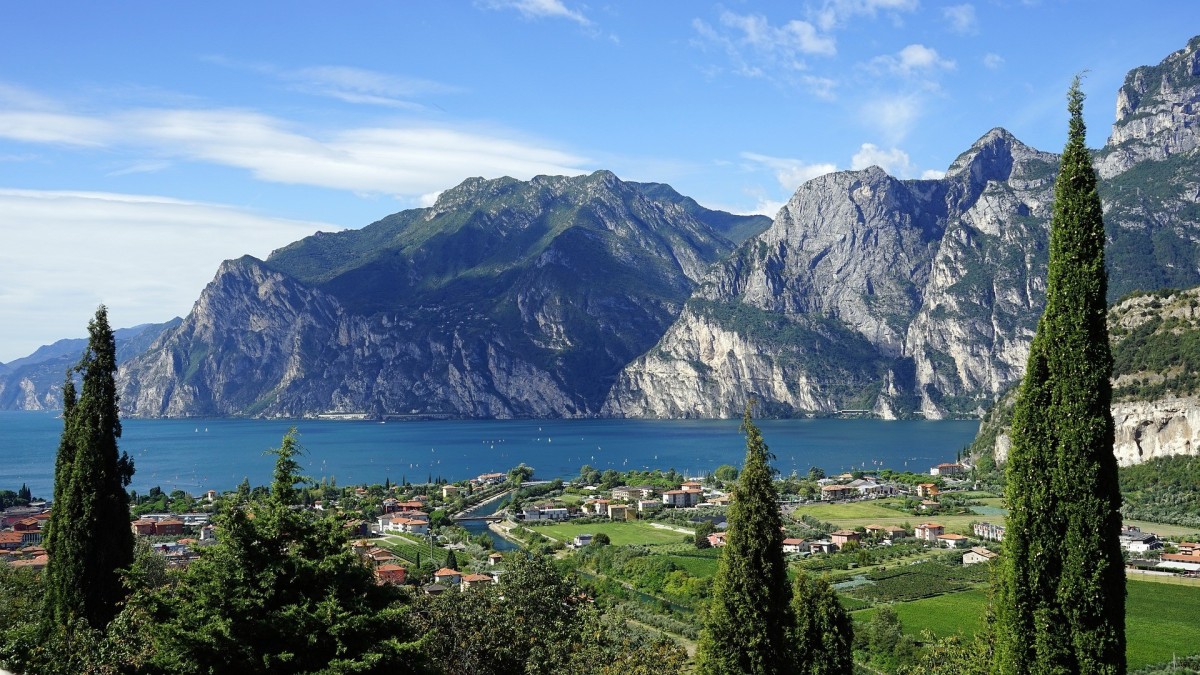
Lake Maggiore
Lake Maggiore is the second largest lake in Italy and offers spectacular views of the Alps. It has an area of 212 km2 and a maximum depth of 372 metres. Located between Piedmont, Lombardy and Canton Ticino, it is known for its deep blue waters and picturesque islands.
You can start your lake tour by visiting the Borromean Islands, full of lush gardens, historic villas and incredible views of the lake. Speaking of natural beauty and trails, then, you will find several nature parks that start in the valley and ascend in altitude.
But one of Lake Maggiore's strengths also lies in the many towns along its shores. Among the must-see towns are Arona, Stresa and Verbania, which offer a variety of attractions from medieval castles to art museums.
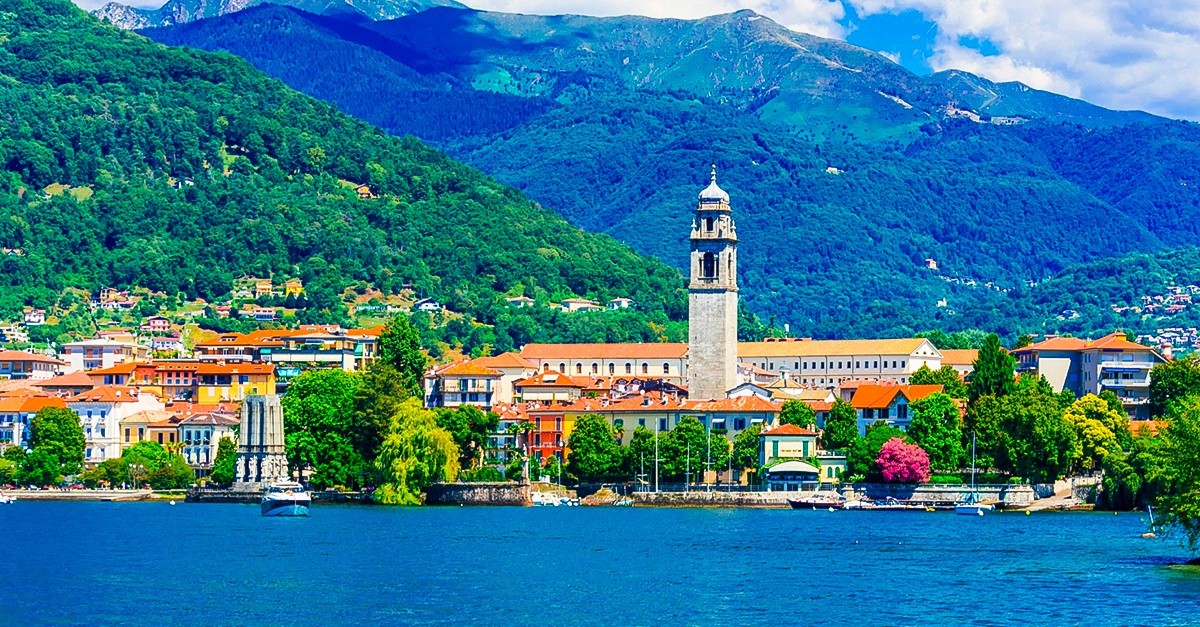
Lake Como
Lake Como, nestled in the mountains, is famous for its branches between the provinces of Como and Lecco. It is the third largest lake in Italy with an area of 145 km2. The basin is also very deep, reaching 410 metres in places. There is so much to see here, both historically and in terms of nature.
For a start, there are two capital cities on its shores that are worth discovering. The lake is then characterised by the numerous villages and towns, some of which host noble villas along the shores. These luxurious structures, surrounded by well-tended gardens, offer a glimpse into the region's aristocratic past.
From Lake Como you can also set off on high altitude hikes. Thanks to some cable cars, you can ascend to high altitudes and have a wonderful view of Italy and Switzerland. Speaking of activities, besides hiking, you can swim in the lake or explore it by boat.

Lake Trasimeno
Heading towards central Italy you will find the fourth largest lake in Italy. It is precisely Lake Trasimeno, located in Umbria, and a good128 km2 wide. Although shallow, Lake Trasimeno is swimmable and also boasts some islands in between.
The lake is surrounded by rolling hills and charming villages. The atmosphere is indeed that of the ancient villages between Umbria and Tuscany. Places not to be missed include the centre of Castiglione del Lago, one of the most beautiful villages in Italy, or Passignano sul Trasimeno.
This lake offers many opportunities foroutdoor activities, such as sailing, birdwatching and walking along the scenic trails. Finally, this area is rich in history, having been the scene of one of the greatest battles of ancient Rome, the Battle of Lake Trasimeno in 217 BC.
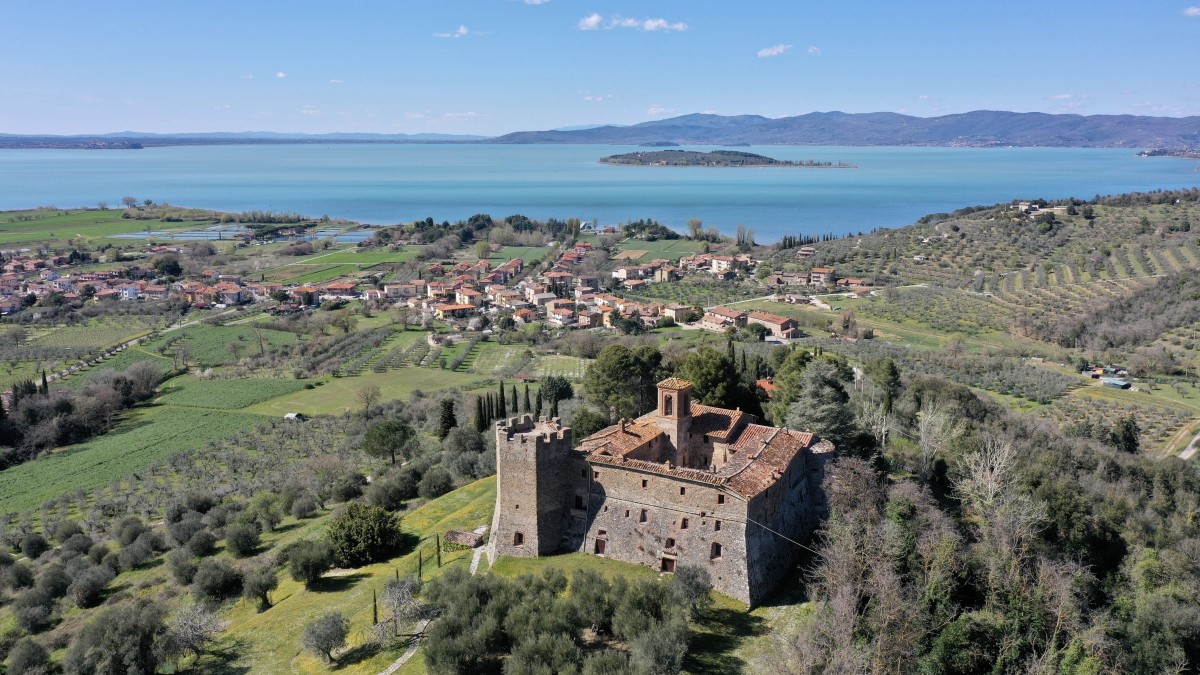
Lake Bolsena
Not far from Trasimeno is Lake Bolsena, located in the province of Viterbo. Measuring 114 km2 and an average of 81 m deep, it is of volcanic origin. Its calm, clean waters are ideal for swimming, canoeing or simply relaxing on the shore.
The towns surrounding the lake are full of historical charm and are certainly among the things to see in the area. Bolsena, the town after which the lake is named, is famous for its fortress and cobbled streets. Also not to be missed are Montefiascone, with its imposing cathedral, and Capodimonte, known for its Rocca Farnese.
If you are in the area, after perhaps following one of the hiking trails, don't forget to also visit the Bisentina Island and Civita di Bagnoregio, a village nicknamed 'the dying city'.
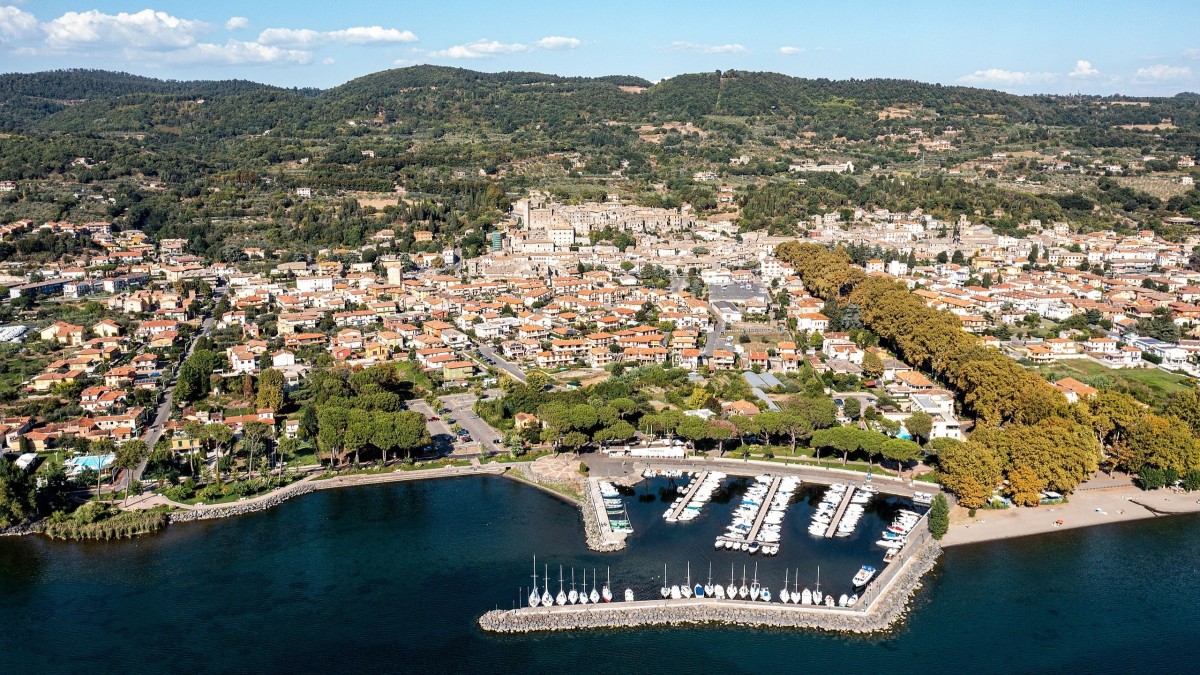
Lake Iseo
Finally, in sixth place in the ranking of Italy's largest lakes is Lake Iseo. Situated between the provinces of Bergamo and Brescia, it measures 65 km2. But this stretch of water boasts several records, such as that of Monte Isola, the largest lake island in southern Europe.
Here, when it comes to things to do and see, you will be spoilt for choice. There are, for example, many outdoor activities. You can swim during the summer season or go trekking in the autumn, among the orange falling leaves.
Among the villages you should not miss is definitely Iseo, which gives its name to the lake. It is a very lively town with a rich history. Continue on to Sarnico and Lovere, where you will find several historical buildings and, at the northern end of the lake, Pisogne is also worth a visit.
